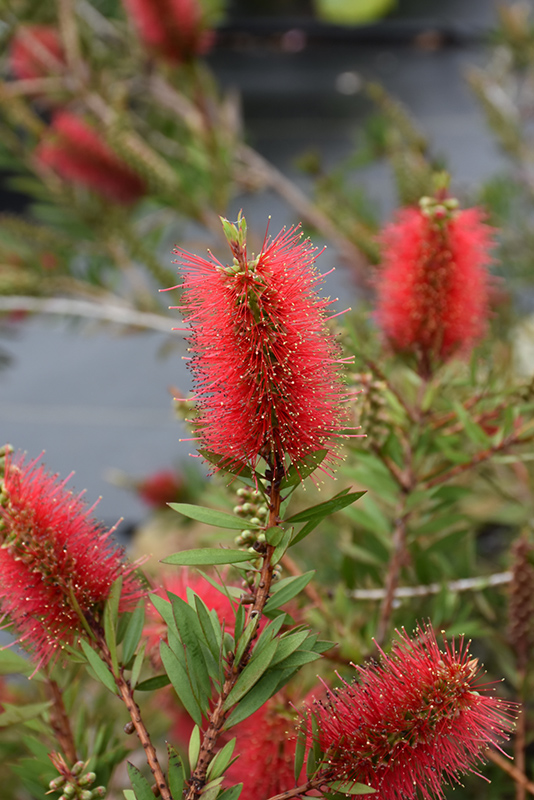Woodlander’s Hardy Bottlebrush
Description
An exceptionally hardy selection presenting eye catching, bright red bottlebrush flowers; blooms more heavily in summer, then sporadically going into fall; may die back to the ground in zone 7 during a cold winter
Landscape Attributes
Woodlander's Hardy Bottlebrush is an open multi-stemmed evergreen perennial with an upright spreading habit of growth. It brings an extremely fine and delicate texture to the garden composition and should be used to full effect.
Woodlander's Hardy Bottlebrush is recommended for the following landscape applications;
Planting & Growing
Woodlander's Hardy Bottlebrush will grow to be about 8 feet tall at maturity, with a spread of 8 feet. Although it is technically a woody plant, this plant can be expected to behave as a perennial in our climate if planted outdoors over the winter, usually regrowing from its base (crown) the following year. As such, gardeners should take into consideration that it will perform differently than it would in its native habitat.
This plant does best in full sun to partial shade. It is very adaptable to both dry and moist locations, and should do just fine under typical garden conditions. It is not particular as to soil type or pH. It is somewhat tolerant of urban pollution, and will benefit from being planted in a relatively sheltered location. Consider applying a thick mulch around the root zone in winter to protect it in exposed locations or colder microclimates. This particular variety is an interspecific hybrid.
Woodlander's Hardy Bottlebrush is a fine choice for the garden, but it is also a good selection for planting in outdoor pots and containers. With its upright habit of growth, it is best suited for use as a 'thriller' in the 'spiller-thriller-filler' container combination; plant it near the center of the pot, surrounded by smaller plants and those that spill over the edges. It is even sizeable enough that it can be grown alone in a suitable container. Note that when growing plants in outdoor containers and baskets, they may require more frequent waterings than they would in the yard or garden. Be aware that in our climate, this plant may be too tender to survive the winter if left outdoors in a container. Contact our experts for more information on how to protect it over the winter months.

